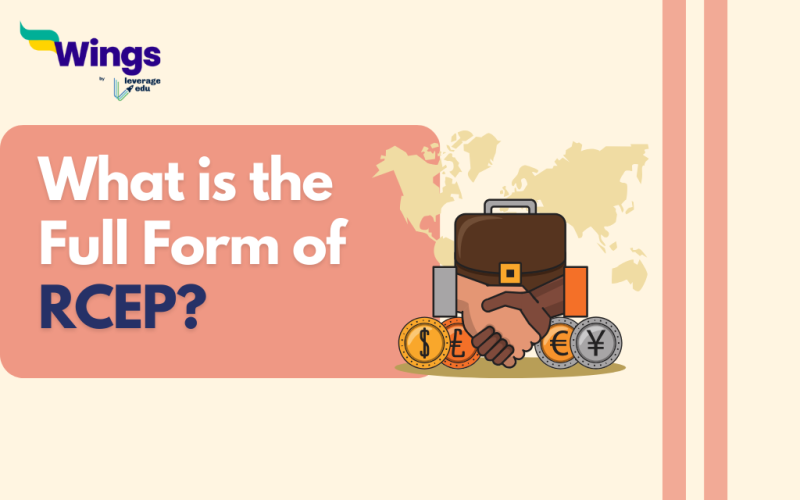The full form of RCEP is the Regional Comprehensive Economic Partnership. It is a free trade agreement and involves 15 countries in the Asia-Pacific Region. Together these countries represent around 30% of the world’s population, making the RCEP the largest free trade agreement in history. In this blog, we will learn more about the abbreviation and know everything about it.
What is RCEP?
Table of Contents [show]
The negotiations for the agreement started in the year 2012. The goal of this agreement was to reduce the trade barriers between countries and promote regional cooperation and economic integration. Thus, the agreement was signed in November 2020 and entered into force on January 1, 2022.
Also Read – What is the Full Form of SAARC?
Who are the members of RCEP?
These are the members of RCEP –
- ASEAN member states – Brunei, Cambodia, Indonesia, Laos, Malaysia, Myanmar, Philippines, Singapore, Thailand and Vietnam.
- ASEAN’s free trade agreement Partners – Australia, China, India, Japan, South Korea and New Zealand.
RCEP is a pact between these countries to reduce trade barriers and promote the free flow of goods and services with good investment.
Also Read – What is the Full Form of ADB?
What are the Benefits of RCEP?
Some of the benefits that the signing partners get are –
- Increased trade and investment.
- Lower tariffs on goods and services.
- Simplified Customs procedures.
- Extensive regional supply chains.
- Stringer Intellectual Property Rights for Innovations.
- Economic growth and job creation.
What is the impact of the RCEP agreement?
The impact of RCEP can be seen in many terms. It has and will impact by –
- Strengthening the global trading system
- Increase in the trade flow
- Create millions of jobs
- Boost the economic growth in the region.
- Help the consumers, Businesses and Workers.
- Prosperity and stability in the region.
RCEP is still taking its shape from paper to reality, while there are some concerns about its impact, however, the overall goal of promoting economic growth and development in the region is a positive one.
Also Read – What is the Full Form of FTA?
Importance of RCEP for India
The RCEP helps India’s goal of connecting with Asia along with India’s Look East Policy and boosts its economy with other South Asian countries.
Also, India’s trade with RCEP countries has increased more than with TPP and TTIP countries over the last ten years, showing the importance of the RCEP to India.
However, India joined the RCEP’s drafting committee in 2011 but left in 2019 because it felt the committee didn’t address its main issues.
Reasons for India to Leave RCEP
India decided to leave the RCEP for several reasons:
- Joining the RCEP would mean dealing more with China, which could flood Indian markets with cheaper Chinese products, increasing India’s trade deficit with China.
- There were worries about China not following the rules of origin.
- Being part of the RCEP could lead to more imports from countries like South Korea, ASEAN, and Japan, but not as much in exports, causing a trade deficit with these countries.
- India wanted a system that would allow it to raise tariffs on imported goods if they exceeded a certain level.
- India was concerned about reducing or removing tariffs on products like dairy and steel.
Popular Full Forms
We hope this blog has helped you understand the full form of RCEP and everything related to it. If you want to know more, find the 300+ full forms list on our blog. In the world of short forms, you can rely on the Leverage edu page to know about more full forms like this! Connect with us study abroad experts to achieve your international dream today!
 One app for all your study abroad needs
One app for all your study abroad needs















 45,000+ students trusted us with their dreams. Take the first step today!
45,000+ students trusted us with their dreams. Take the first step today!
